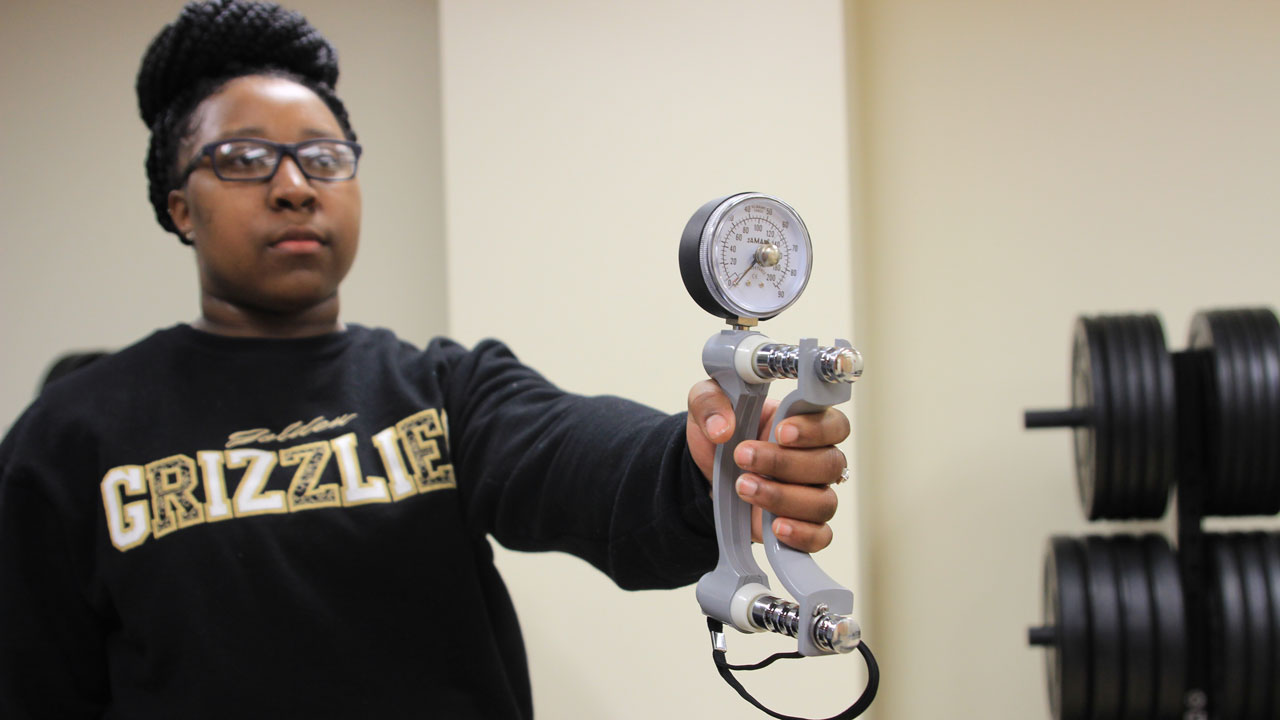OU grip strength study can help screen for cardiometabolic disease risk in youth

Cardiometabolic diseases are a group of common but often preventable conditions, including heart disease, stroke and diabetes. Detecting cardiometabolic disease risk in younger populations is important because children with higher cardiometabolic risk are more likely to develop those conditions, and other health complications, when they become adults. Oakland University researchers have published a study using grip strength to help assess cardiometabolic disease risk among adolescents and young adults in the U.S.
Cardiometabolic risk factors include increased waist circumference, high blood pressure and high triglycerides (fat), high glucose (sugar) and lower HDL (good) cholesterol levels in the blood.
“In youth, cardiometabolic disease risk has been increasing, along with obesity rates,” said Dr. Elise Brown, OU associate professor of Wellness and Health Promotion, and a senior author on the study. “Our hopes are that these grip strength measures, which are called cut-points, will be integrated into routine school-based fitness tests like the FITNESSGRAM, as well as community-based health promotion initiatives.”
The study answers growing calls from researchers and health organizations, such as the National Academy of Medicine, to develop youth fitness testing standards that assess for health risks, instead of just comparing a child’s fitness status to their peers.
National Health and Nutrition Examination Survey 2011–2012 and 2013–2014 data sets were used to establish age- and sex-specific grip strength cut-points for U.S. females and males aged 12-24. The cut-points represent the highest normalized grip strength score from the dominant hand in kilograms divided by a person's bodyweight in kilograms.
For example, if a 15-year-old female exerts 18 kg (39.6 lbs.) of force on her dominant hand while squeezing the dynamometer (hand-grip tool), and she weighs 50 kg (110 lbs.), her normalized grip strength score would be 0.36. Since that score is above the 0.34 cut-point, this means she would have a lower risk for developing cardiometabolic conditions.
For the study, grip strength is used to estimate overall muscle strength, which is often directly associated with the presence of muscle tissue in the body. As Dr. Brown explains, healthy muscle tissue is key to staving off cardiometabolic disease.
“Muscle tissue plays an important role in many body functions like metabolism (converting food and drink into energy) by removing glucose (sugar) and triglycerides (fat) from the blood, helping to preserve our organs and tissues, and decreasing inflammation in the body,” she said. “Although the mechanisms are not completely understood, cardiometabolic disease and lack of physical activity in youth are related to lower levels of lean mass, which includes muscle, bone, fluid and organs.”
The grip strength study was published in the journal Measurement in Physical Education and Exercise Science. Along with Dr. Brown, the study was co-authored by OU graduate students Benjamin DeHondt and Samar Madi, Dr. Dorin Drignei, OU professor of statistics, and Duncan Buchan, senior lecturer at the University of West Scotland. DeHondt, a recent graduate of OU’s master’s program in exercise science, was the study’s lead author, with Dr. Brown serving as his faculty mentor.

 January 30, 2023
January 30, 2023







